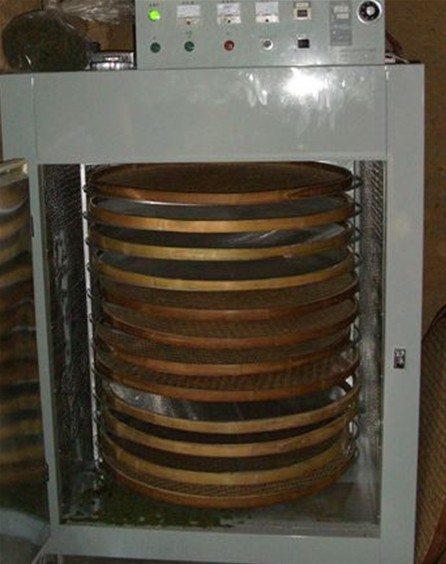Plucking tea leaves
It is the first process of making Tieguanyin tea leaves. It is time to pluck tea leaves when the terminal bud of tea leaves are almost in the same size. Scissors or blades are needed to do the plucking, removing tea buds, and separating leafbuds according to different sizes, making it easy for tossing process. The best time for plucking is 12-3 pm when it is sunny, for tea leaves are freshest during this period of time. Once tea leaves are plucked, they must be carried home and put in the air-conditioning room for retaining freshness, avoiding the risk of fermentation that may adversely affect the quality of tea leaves. Besides, picked tea leaves should be neither too fresh nor too tender. As a matter of fact, it is hardly impossible to get the right timing or right leaves, for long rainy days ruin all what is expected.。
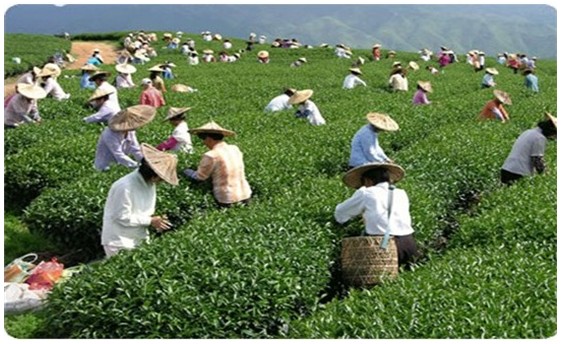
Sun withering
The proper quantities of picked tea leaves will undergo the process of sun withering in thin layers evenly on the ground. There are a great variety of sun witherings, some are spread out evenly in water sieve before being sun withered on a stand; some are sun withered on the ground and others on bamboo sieve. Sun withering may result in the evaporations of some water in leaves, accelerating chemical reaction within fresh leaves and getting it ready for tossing process.
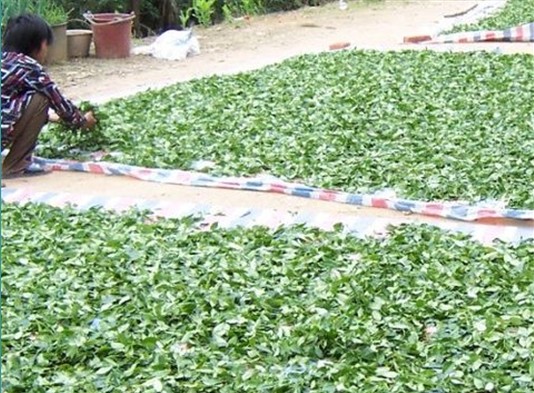
Cooling
After the sun withering, tea leaves are spread out in sieves, and put in air-conditioning room with a temperature of 18-20 degrees. As some water in tea leaves evaporate after being sun withered, making leaves look soft and coiled, water in peduncle and leaf vein will replenish the leaf surface, allowing the surface to straighten.
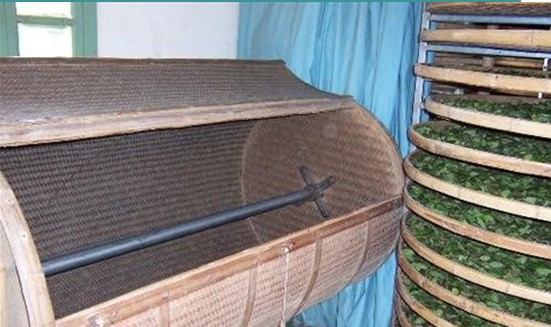
Tossing
Tossing depends on the change in water content of leaves after being left in the green leaf storage room to cool for some time. Pour leaves in water sieve into “tossing machine” made of bamboos for tossing, which is driven by electric motor to rotate. When leaves roll and collide against each other in the tossing tube, most cells of leaf margins are broken and water begins to permeate with intercellular space filled with water and leaves stiffened, killing the herbal smell of leaves. When tea polyphenol comes into contact with enzyme, it speeds up the transformation of substance; and meanwhile the water content decreases due to slow evaporation.
Tossing and cooling are repeatedly done in turn, the most important step to ensure the quality of tea leaves.
Tossing and cooling are collectively called making green. The criteria to judge whether making green is properly done is to see green leaves dotted with redness at the leaf margin. Please see the figure above.
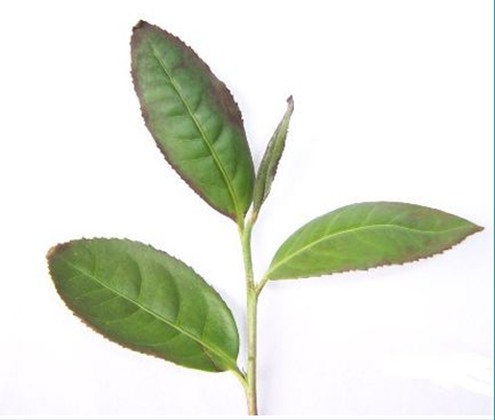
Fixation
Fixation, also called pan firing, features the rapid destruction of enzyme activity by strong heat to enhance the quality. The figure below shows the fixation process of rotary fixation machine.
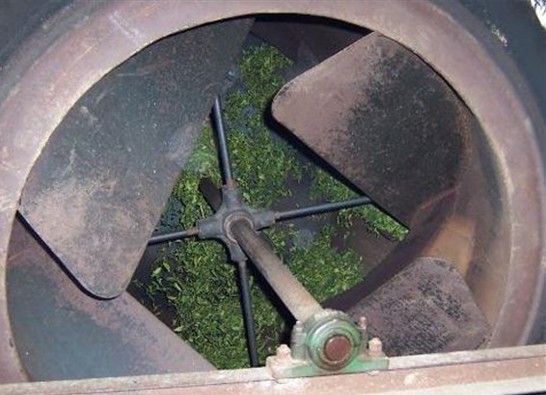
Pack rolling
After the fixation process, wrap leaves in a special cloth and use the packing machine to tightly pack leaves like a ball. See the figure below. This process is to design appearance and color.
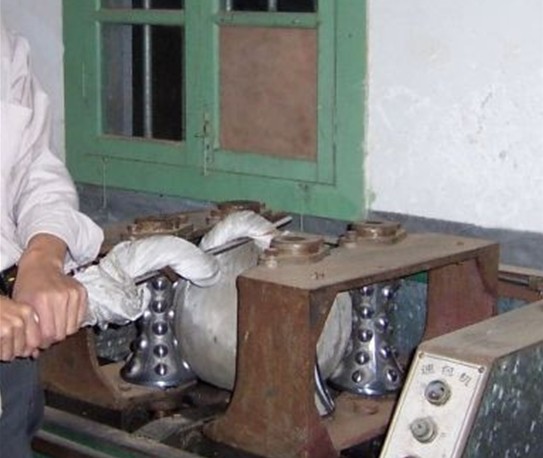
Rolling
Put the packed tea bags in rolling machine for rolling. As ball-shaped tea bags keep rolling in the machine, leaves inside bags will be reduced to granular shape gradually under the force of extrusion, and such process requires repeated operations.
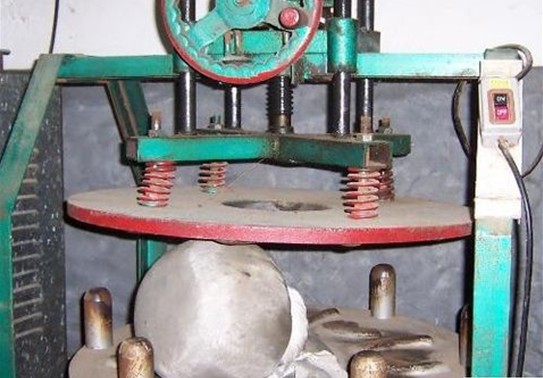
Roasting
After the rolling process, leaves will be roasted. Specifically, spread out rolled leaves on bamboo sieves and then have them roasted in drying oven on iron stand.
Pack rolling, rolling and roasting are done twice or three times. Tea leaves can not be made into finished product by roasting until appearances are satisfactory.
